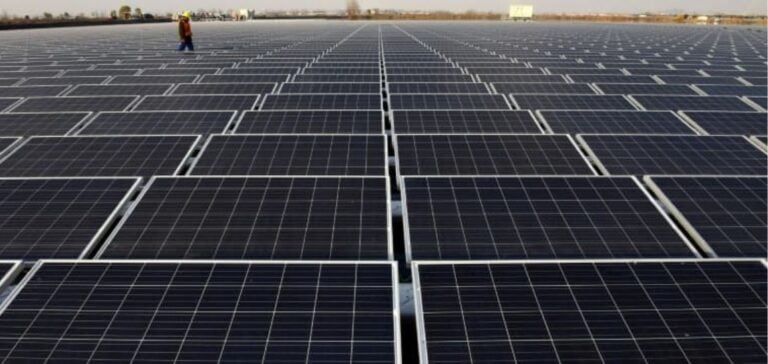China has taken another major step forward in renewable energies by connecting the world’s largest solar farm to the power grid. Located in the desert region of Xinjiang, this 5 gigawatt (GW) facility covering 200,000 acres promises to generate around 6.09 billion kilowatt-hours (kWh) of electricity per year. This production would be enough to supply a country like Papua New Guinea for a year.
Background and development
Construction of the huge solar farm was led by the state-owned Power Construction Corporation of China. This achievement is part of China’s national strategy to increase its renewable energy production capacity in order to reduce its dependence on fossil fuels and cut carbon emissions. In addition to its vast desert areas, the Xinjiang region enjoys excellent sunshine conditions, making it an ideal location for such projects. What’s more, this area has become a nerve center for massive renewable energy bases, transmitting their power over long distances to the densely populated regions of China‘s east coast.
Comparison with existing installations
Prior to this inauguration, the two largest operational solar plants were also in Western China: Longyuan Power Group’s Tenggeli desert solar project in Ningxia and China Lüfa Qinghai New Energy’s Golmud Wutumeiren solar complex in Qinghai, both with a capacity of 3 GW. The new project in Xinjiang surpasses these previous records, consolidating China’s position as a world leader in renewable energies.
Impact and outlook
This solar farm project will not only boost China’s energy capacity, but also promote local economic development in Xinjiang, a region often marked by social and political tensions. Infrastructure on this scale is also likely to stimulate innovation and employment in the region. What’s more, this achievement represents a significant step towards China’s goal of becoming carbon neutral by 2060. Increased solar power generation capacity reduces the need for polluting fossil fuels, thus contributing to the global fight against climate change. The development of the world’s largest solar farm in Xinjiang marks a key step in China’s energy transition. By investing massively in renewable energies, China is not only meeting its growing energy needs, but also playing a crucial role in global efforts to reduce carbon emissions. The project symbolizes the country’s commitment to a more sustainable future, and could serve as a model for other nations seeking to develop their own renewable energy capacity.






















